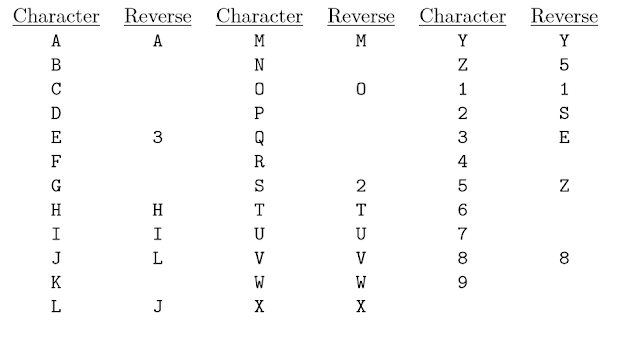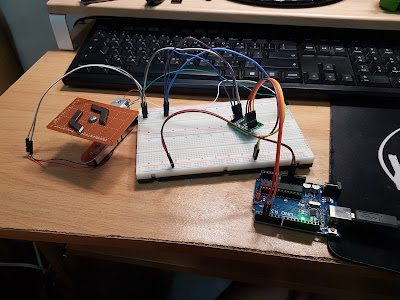[C語言]映射函數模型實作-直接映射
範例輸入
記憶體:16MB
快取記憶體:64KB
快取區塊:4B
結果:0CE7
記憶體:16MB
快取記憶體:64KB
快取區塊:4B
結果:0CE7
1 2 3 4 5 6 7 8 9 10 11 12 13 14 15 16 17 18 19 20 21 22 23 24 25 26 27 28 29 30 31 32 33 34 35 36 37 38 39 40 41 42 43 44 45 46 47 48 49 50 51 52 53 54 55 56 57 58 59 60 61 62 63 64 65 66 67 68 69 70 71 72 73 74 75 76 77 78 79 80 81 82 83 84 85 86 87 88 89 90 91 92 93 94 95 96 97 98 99 100 101 102 103 104 105 106 107 108 109 110 111 112 113 114 115 116 117 118 119 120 121 122 123 124 125 126 127 128 129 130 131 132 133 134 135 136 137 138 139 140 141 142 143 144 145 146 147 148 149 150 151 152 153 154 155 156 157 158 159 160 161 162 163 164 165 166 167 168 169 170 171 172 173 174 175 | #include <stdio.h> #include <stdlib.h> #include <math.h> //string to HEX //printf("%08x\n",foo("0xff")) unsigned int foo(const char * s) { unsigned int result = 0; int c ; if ('0' == *s && 'x' == *(s+1)) { s+=2; while (*s) { result = result << 4; if (c=(*s-'0'),(c>=0 && c <=9)) result|=c; else if (c=(*s-'A'),(c>=0 && c <=5)) result|=(c+10); else if (c=(*s-'a'),(c>=0 && c <=5)) result|=(c+10); else break; ++s; } } return result; } //取得2的次方 int getPower(int value){ int count=0; int chk=1; while(chk){ value=value/2; if (value<2){ chk=0; } count++; } return count; } //十進制轉二進制 char * toBin(int value){ char *s = malloc(50 * sizeof(char)); itoa(value, s, 2); return s; } //二進制轉十六進制 void binaryToHex(const char *inStr, char *outStr) { // outStr must be at least strlen(inStr)/4 + 1 bytes. static char hex[] = "0123456789ABCDEF"; int len = strlen(inStr) / 4; int i = strlen(inStr) % 4; char current = 0; if(i) { // handle not multiple of 4 while(i--) { current = (current << 1) + (*inStr - '0'); inStr++; } *outStr = hex[current]; ++outStr; } while(len--) { current = 0; for(i = 0; i < 4; ++i) { current = (current << 1) + (*inStr - '0'); inStr++; } *outStr = hex[current]; ++outStr; } *outStr = 0; // null byte } int main(int argc, char** argv) { // int ramSize_MB; int cacheMemSize_KB; int cacheBlockSize_B; // int memAddress; char memAddress_s[50]; //參數輸入; printf("RAM size(MB):"); scanf("%d", &ramSize_MB); printf("Cache mem size(KB):"); scanf("%d", &cacheMemSize_KB); printf("Cache block size(Byte):"); scanf("%d", &cacheBlockSize_B); printf("Input a mem address(HEX):\nExample:0x113609C\n"); scanf("%s", memAddress_s); memAddress=foo(memAddress_s); // ramSize_MB=ramSize_MB*pow(2, 20); cacheMemSize_KB=cacheMemSize_KB*pow(2, 10); // printf("\n"); printf("切分成(塊):%d\n",ramSize_MB/cacheMemSize_KB); //線路 printf("每個區塊大小(KB):%d\n",cacheMemSize_KB/1024); //每個區塊含有(條)線路 printf("每個區塊含有(條)線路:%d\n",cacheMemSize_KB/cacheBlockSize_B); //int totalPath=cacheMemSize_KB/cacheBlockSize_B; //記憶體位置長度 printf("總長度(bits):%d\n",getPower(ramSize_MB)); int memLength=getPower(ramSize_MB); // printf("線路需要?bits定址:%d\n",getPower(cacheMemSize_KB/cacheBlockSize_B)); int pathNeedBits=getPower(cacheMemSize_KB/cacheBlockSize_B); // printf("字組需要?bits定址:%d\n",getPower(cacheBlockSize_B)); int wordsNeedBits=getPower(cacheBlockSize_B); //標籤大小(剩下沒用到的定址空間) printf("標籤可用大小(bits):%d\n",memLength-pathNeedBits-wordsNeedBits); int tagSize=memLength-pathNeedBits-wordsNeedBits; //處理輸入的記憶體 printf("\n"); printf("MEM(HEX):0x%x\n",memAddress); printf("MEM(BIN):%s\n",toBin(memAddress)); char *memAddress_bin=malloc(50 * sizeof(char)); memAddress_bin=toBin(memAddress); //算陣列長度>取得位移 int length=0; while(memAddress_bin[length]!=0){length++;} // array final char \0 length++; int shifting=length % 4; //printf("%d\n",length % 4); printf("標籤:"); int flag,flag2,flag3; for(flag=0;flag<tagSize-(shifting+1);flag++){ printf("%c",memAddress_bin[flag]); } //printf("\n%d",flag); printf("線路:"); char cachePathNum[50]; int tmpCount=0; flag2=flag; for(flag=flag;flag<(pathNeedBits+flag2);flag++){ printf("%c",memAddress_bin[flag]); cachePathNum[tmpCount]=memAddress_bin[flag]; tmpCount++; } printf("字組:"); flag3=flag; for(flag=flag;flag<(wordsNeedBits+flag3);flag++){ printf("%c",memAddress_bin[flag]); } //結果 binaryToHex(cachePathNum,cachePathNum); printf("\n快取線路:0x%s",cachePathNum); return 0; } |




留言
張貼留言